By Clara Hatcher — On the morning after our first day of riding, Rain Felkl and I woke up beneath the pine trees around Lake Baron in Meyer, California. Rain’s Niner RLT and my Surly Long Haul Trucker leaned against nearby trees with our gear and clothes strewn across the tops of our panniers and over branches. We slept without a tent, having been too tired the night before to set it up; we would never set up that tent for the entirety of our five-day bikepacking trip. Since it is Rain’s, I’m still not sure what it looks like.
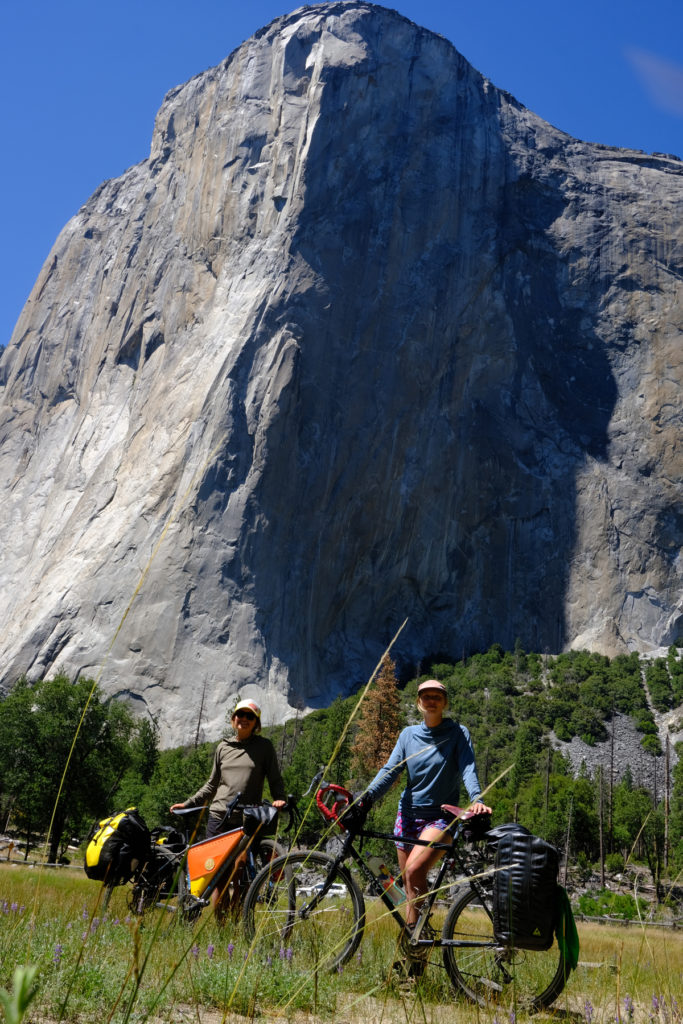
We rolled over in our bags and pulled out our phones to plan. This morning, we had a choice to make. In preparation for our trip, Rain and I mapped out two routes. The first took us from Truckee to Yosemite National Park by way of Highways 89 and 395. We’d see less than 16,000 feet of elevation gain, and we’d have the opportunity to stop by hot springs and lakes along the way. The second followed Highway 4 through Monitor and Ebbetts passes, and more than 24,000 feet of elevation gain. It’s the route racers take on the Tour of the California Alps, called the Death Ride. Bogged down with gear, food, and constrained by a five-day window, we chose the former. The Death Ride would have to wait.
Rain and I planned this trip hoping it would be an escape from the stir-craziness and, at least for me, the uncertainty of being without a job and far from family during a pandemic. For us, biking over the summer while the world’s crises raged gave us both purpose and relief. After months of anxiety and quarantine, we were ready for a longer ride. We settled on California, on Yosemite National Park, on sunshine and on day after day of pedaling with our life in our panniers.
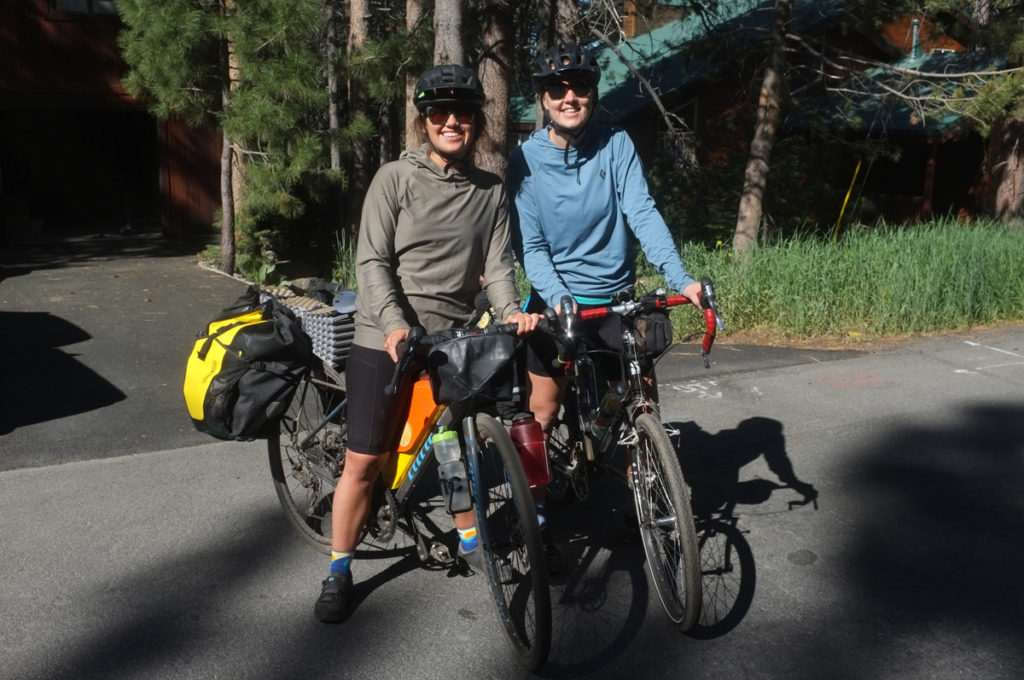
Day one found us in the driveway of Rain’s friend, Freddy Mondale, shoving bars in our handlebar bags and water bottles in cages. Freddy and his girlfriend, Lisa Lacampagne, housed us the night before our departure, fed us affogatos and tomato-mozzarella salad, and saw us off with the promise that Freddy and Rain’s partner, Clay James, would meet us in Lee Vining, at a legendary gas station called the Mobil Mart. That would be our final stop before descending into Yosemite Valley from the Tioga Pass entrance.
We plugged in our route, our headphones and double-checked our gear before heading off down the hill out of Truckee. But, no more than five miles into our ride, I realized I couldn’t shift into the largest chainring on my Surly. I could only coast downhill, and I could barely get momentum going otherwise. We pulled over in a school parking lot down the hill from Freddy’s house, and I tightened the cable that had come loose. I rode in circles until I was confident in my ride, and we took off again. By the time we reached the Truckee River Trail, we were coasting and smiling big from the exhilaration of our first day. Sometimes, as cyclists passed by, they would holler at us, “Where are you headed?”
“Yosemite!” We’d shout back over the wind. We’d see big smiles, hear whoops and encouragement in return.
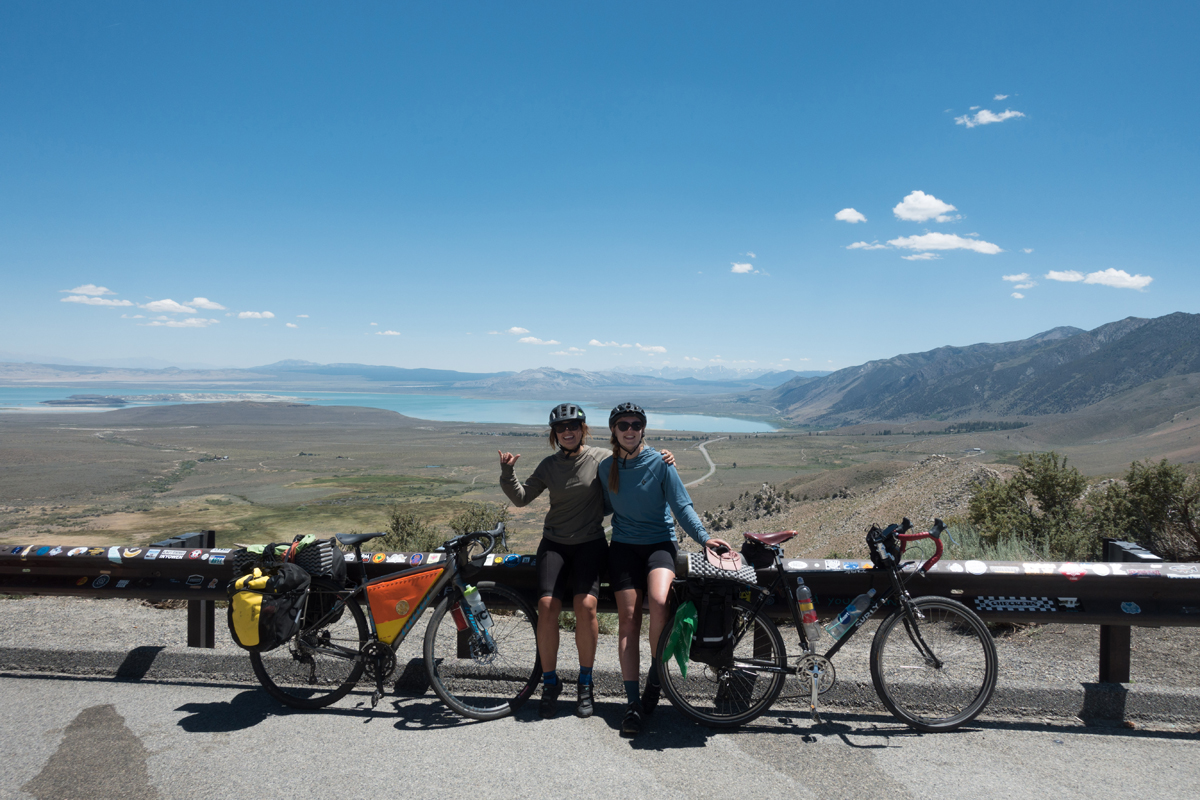
We were overjoyed with the fact that we would be riding every day. It seems like it’s too good to be true, sometimes, to wake up to blue skies with a bike at your side and know that all you have to do is pedal. But, no matter how good it sounds, pedaling can still be a challenge. Just like hiking and running, biking long distances means pushing yourself to certain limits and challenging your body. It’s a shame that we don’t stay in the same shape as when we finished our last epic, but we don’t, and it’s a kick in the butt to relearn that each time a new adventure starts. For me, that realization came on our first climb from Lake Tahoe up to Emerald Bay State Park.
Most of the time pedaling through California, I rode behind Rain. She’s strong, she’s fast, and she dances her way through climbs. Sometimes literally, since she’s mostly playing surf rock on repeat. On this first real ascent, I was breathless early on. I wasn’t used to the weight and the miles. I was frustrated by how little I had been riding at home, despite my loving it. I thought about the time I spent on the couch over the last few months, and I could feel my legs protesting while I pushed through, pedaling uphill slowly. I thought I must be suffering for good reason, but when I looked up at Rain, I only saw her cruising uphill, grooving with her headphones in. Lightened by Rain’s mood and still paradoxically discouraged by my own abilities, I hopped off my bike and walked partway up the pass before pushing through and pedaling on.
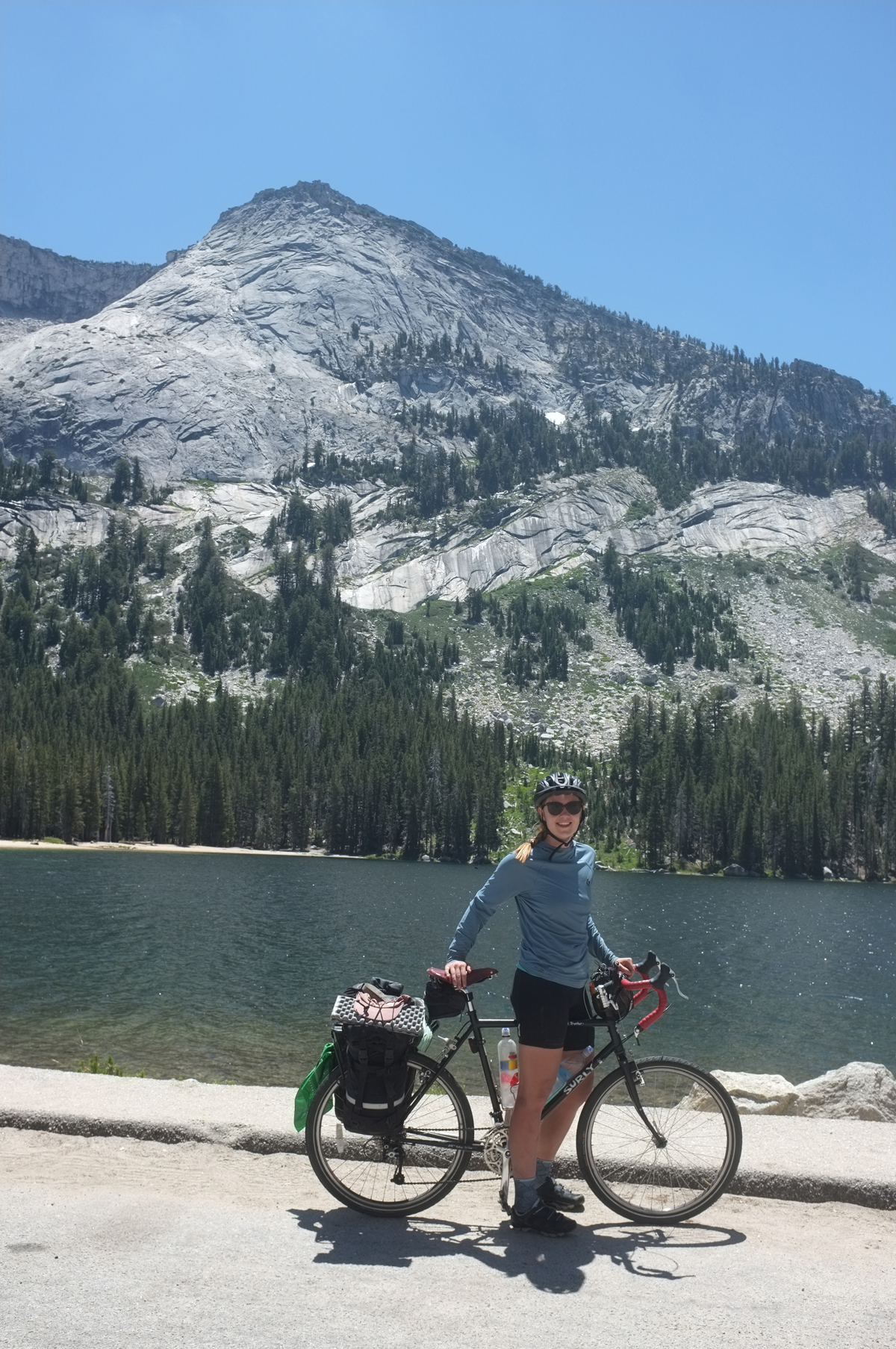
At the top, I sat down next to my friend. “How did you do that?” I asked. “How did you keep pedaling?”
She looked at me and said that, with her headphones in, she can focus up and push through all of the resistance from her brain and body until she reaches the top of whatever mountain she’s climbing.
“At a certain point,” she said, “you just have to block it all out and keep going.”
We rode south the next morning from Lake Baron with Topaz Lake in mind as our endpoint. We were stiff, but not sore, and we were already stronger than our first day. I shoved my headphones in my ears on the way out of town and listened to an audiobook while I started to climb Daggett Pass. I blocked it all out and, at the top, I realized I had only forgotten what it was like to physically suffer from exertion. It’s easy to ride up mountains when suffering is your friend. Being comfortable, I remembered, would not get me anywhere.
That day, I alternated between music and audiobooks with some stretches of silence in between. Silence, that is, apart from the sheep and the goats yelling from the farms we passed. After Daggett Pass, we were rewarded with 30 miles of flats and farmlands, and one shorter climb at the end of our day. We decided to camp at Topaz Lake, at a site we thought would be nice, maybe even peaceful.
Near midnight, Rain and I woke up in the small, bushy space we tucked ourselves away in. Our bikes were stowed away in some brush on the other side of the massive tree next to us, by the rocky shore of Topaz Lake. I heard voices and saw flashing lights and we, two women cowboys camping in the middle of California, stayed right where we were. It wasn’t until 3 a.m. that we woke up again, heard the voices getting louder, and got up to get our bikes, so they wouldn’t be stolen by the unknown people on the previously empty beach.
The voices turned out to be a man and a woman, who were camping out of their car with a massive German shepherd. The dog barked at us when we approached, and the man turned into the light to see what the commotion was for. He had a space between each tooth and a wild look on his face. He smiled at us.
“Didn’t mean to wake you ladies,” he said, brandishing an old pot. “Just making some steaks.”
We excused ourselves and grabbed our bikes, walked them back over the rocky shore, and slept with them at our feet. In the morning, their car was still parked under the tree by the shore, but they were nowhere in sight. After a quick swim with the pelicans that brightened my mood, we packed up our site and rode away.
Halfway to Bridgeport on our third day, Rain and I found ourselves pedaling into a headwind on a gradually climbing pass. We were treated to a fairly easy day of riding and, once we reached Bridgeport, beer and cheese-covered tater tots.
By the time we made it to town, we were already six miles past the turnoff to the various Bridgeport Hot Springs. After the turnoff, we’d have to go another six miles down a gravel road, adding another 12 miles onto our day. We almost didn’t go, but we decided to buck up and ride to the Hot Springs anyway. When we reached the river with its naturally heated stone pools carved into the sides of the ravine, we couldn’t believe we would ever keep riding south. With a small, heated pool to ourselves, we chatted, relaxed, and watched the sun set on our third day of the trip.
In the morning, Rain and I woke up early. We grabbed our coffee, the stove, and all of our oatmeal prep before heading down from our camp on the hill to the largest stone-lined pool at the river, which was too crowded to feel comfortable sitting in the night before. We made oatmeal and drank coffee from the comfort of our pool while the river rushed by. Our fourth day was the shortest at just under 30 miles, and we were fine with taking our time that morning. The trip, we thought, was going by too quickly.
No matter the mileage, we were sweating on our ride from Bridgeport to Lee Vining. We were biking through California in July. The heat was not so bad climbing our last big pass. There was even a light wind. When we descended into the valley, though, that wave of heat hit like a wall, and we were sweating through our sun hoodies long before we reached Lee Vining. We stopped at Mono Lake, which, like the Great Salt Lake, is a disappointment if you’re thinking about swimming. The ancient lake was formed 760,000 years ago and now, with nowhere to go, it has dried up to become salty and parched. It was, at least, a spot that deserved a snack break.
We stopped as soon as we got into town to get ice cream. We sat on a bench with our bikes loaded down at our sides and ate a vanilla cone each. Half an hour later, we walked across the grass in front of the Tioga Pass Mobil Mart toward Freddy and Clay, who sat waiting at a picnic table with a pitcher of mango margarita in hand. We camped that night near the Tioga Pass gate, and I tried to imagine what Yosemite would look like. I had never been, but I had images in my head of it all from movies, books and so many photos from friends. I pictured vast green fields and huge cliffs, the enormity of Half Dome and El Capitan.
Our route for our last day followed Tioga Road from the Tioga Pass entrance to the Upper Pines campground in Yosemite Valley, totaling just under 70 miles and more than 8,000 feet of elevation loss. The four of us—Clay and Freddy with climbing gear on their backs—rode until the boys branched off to climb, and until Rain and I saw Tenaya Lake. We rode to a trail by the water and sat our bikes down on the rocky shore. We were 15 miles in and it was the perfect opportunity, finally, to swim. The water wasn’t so icy, and the walls of rock towered around us. When we got going again, we rode through innumerable ups and downs that snaked around the valley. Just when we thought we were done with our climbing, there would be another quick uphill fight.
Rain and I ate tuna on the rocks overlooking the valley and planned our hike up Half Dome for the following day—we managed to get permits despite us thinking they would be hard to come by—before hopping back on our bikes for our ride down to Crane Flat. At that point, we would have more than 20 miles of victorious descent into the valley. We were nearly alone on the road, and we barely touched our brakes flying through tunnels and turns around the mountain. On the valley floor, we rode past a coyote by the bus stop and two brown bears shuffling around downed trees in the woods. When the forest thinned out, we got our first view of El Capitan and Yosemite Falls, and I was reminded why National Parks are so special, and so sought after. The enormity of it all was hard to absorb. I could see a pair of climbers on the lower section of El Cap—a pair of ants on a massive sheet of rock—and realized, finally, that we were in Yosemite.
When we had called for information at the start of our trip, the park rangers at Yosemite assured us that we would be okay to go through the gate on a bicycle. We might have been some of the only people to be able to go through Yosemite without a hitch. Reservations for car trips into the valley are harder to come by, and we heard more than one group talking about their lack of a permit. As cyclists, we were free to go. We were even free to stay at the backpacker’s campground, where we would be able to grab a campsite on a first-come-first-serve basis.
When I thought about Yosemite all of those times before, I always pictured it with an overwhelming amount of people taking pictures, hiking around and standing in awe of the views from the valley. But, when we rode from Tioga Pass, there were little to no cars on the road and few people stopped at viewpoints. It was more of the same in the valley, where there were plenty of open campsites and a reasonable amount of people stopping to eat at the marketplace. The pandemic thinned out the crowd in Yosemite to what it probably looked like more than 20 or so years ago, devoid of crowds, quiet and natural.
With our bicycles against trees by our heads, sun shirts thrown over our panniers, and wrappers shoved in pockets, Rain and I lay in the grass of the meadows with our two friends, in the shadow of El Capitan, and said goodbye to the valley, thinking of our long drive home to Utah.
It’s nearly three months after our ride and only a few things have changed. The pandemic, still, is raging around us and maybe more aggressively than when we were able to take our bike trip. We both feel lucky to have jobs and places to call home. The uncertainty about what the future will look like is still present, but so is our ability to escape, for now. It’s rapidly shifting from biking for release to skiing. Bikepacking acted as a perfect remedy for our angst and, when the snow melts away, it will be that for us again.









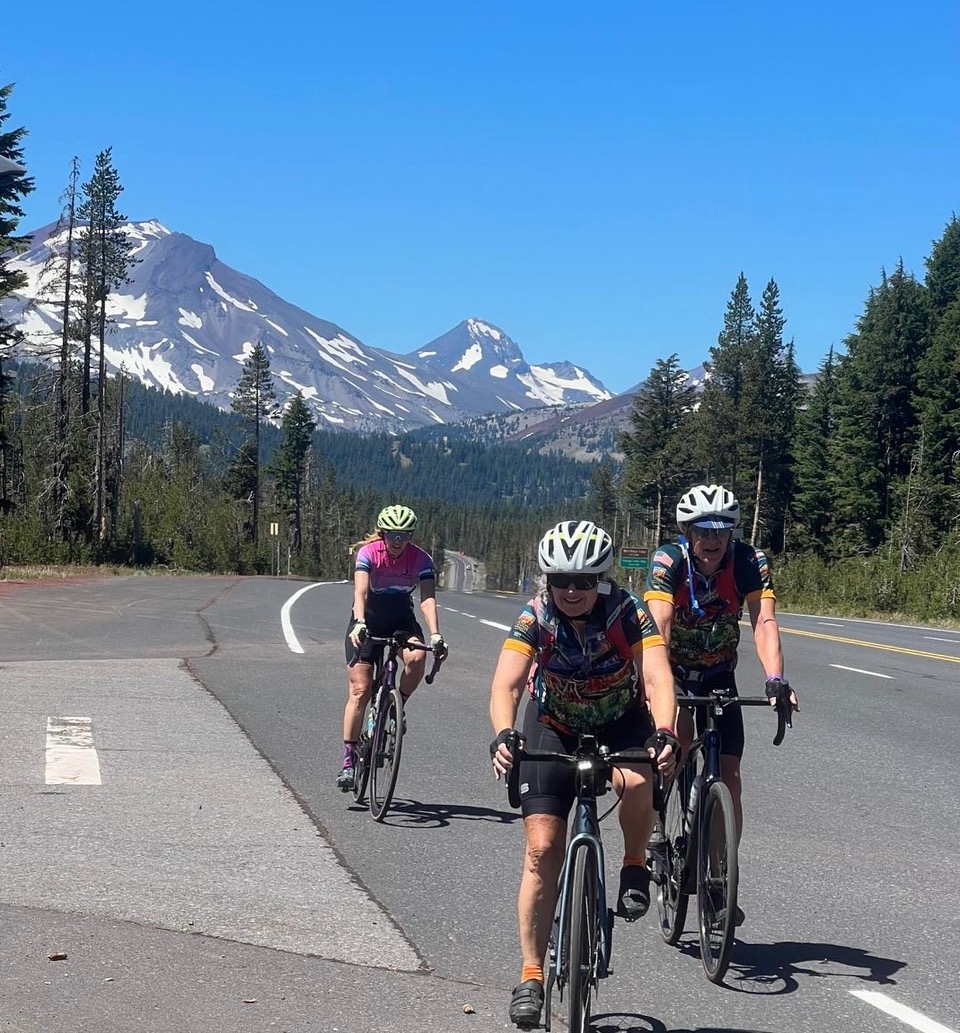



Hey! I actually met you guys at the coffee shop in Meyers near my house! You guys inspired me to do this ride and I remember you guys debating the route to take! I was wondering if you guys could give me a heads up on where you camped and such. You kicked ass!
Hi! Thank you for your comment that’s so cool you found this story after our meeting! I’d love to talk camping. Shoot me an email @ [email protected] and we can chat.
Sounds like a great trip! I love bike touring, which I guess is now bike packing.
Comments are closed.